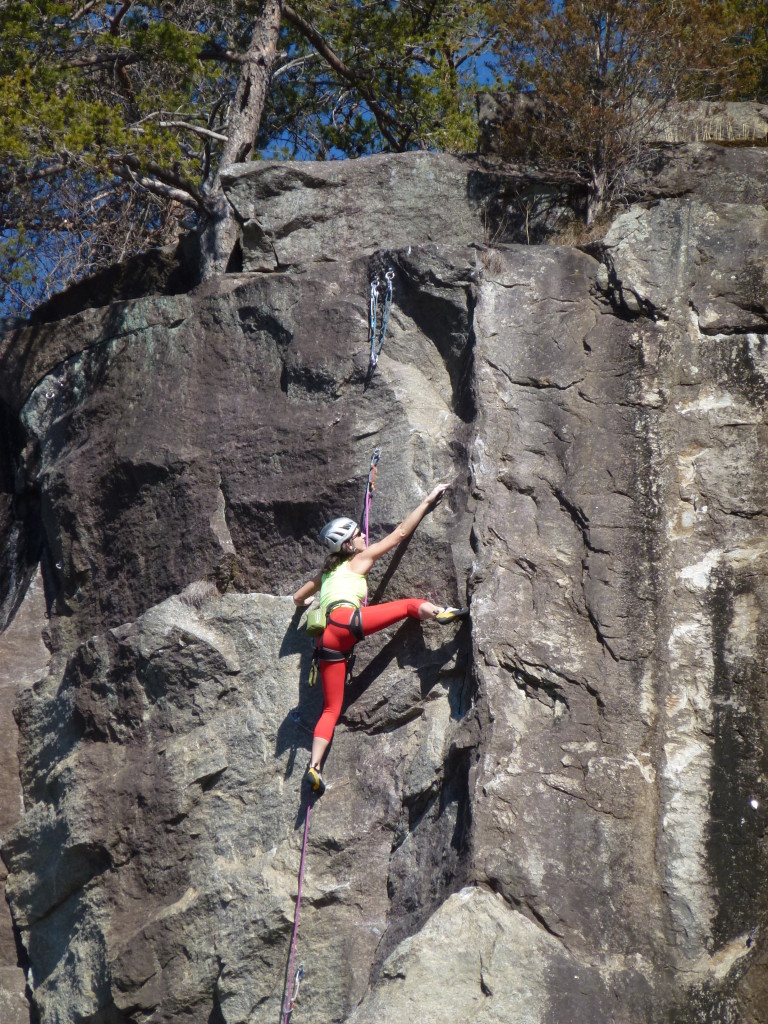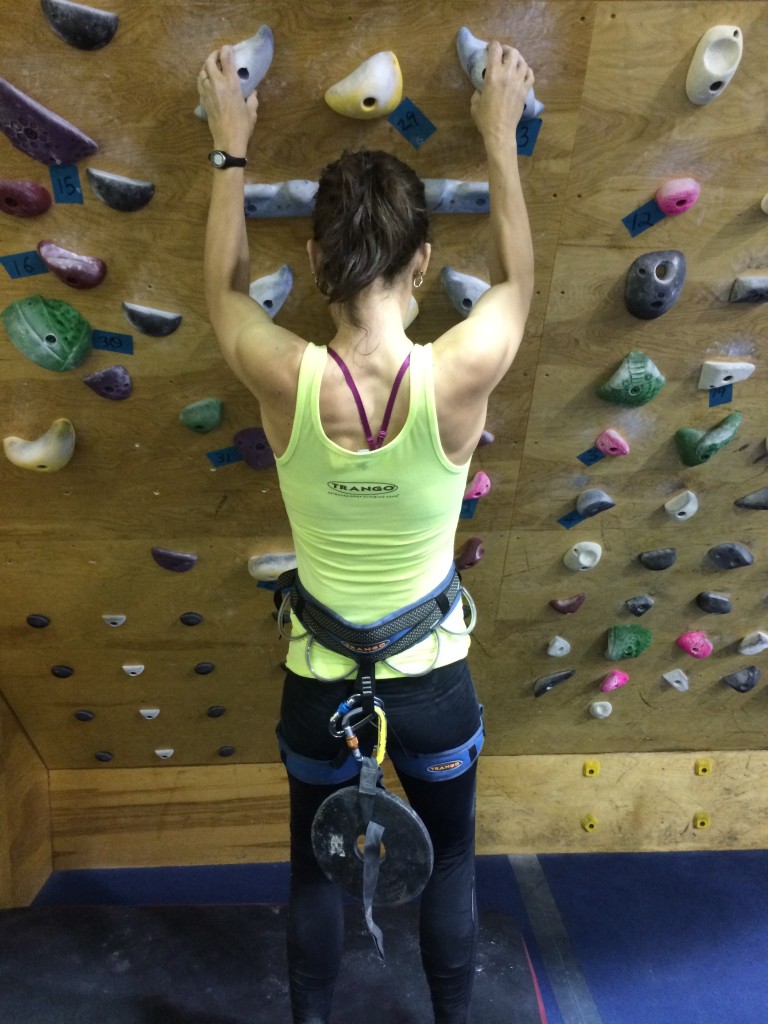Rock Climber’s Training Manual Part 1 (Base Fitness and Strength)
When I first started climbing, I didn’t bother with any sport-specific training of any sort. My formula for improving was to just climb. However, once Cragbaby #1 came into the picture, our midweek climb time was greatly decreased, which meant the time we did have needed to be a little more efficient. I started keying in on my weaknesses and choosing routes/problems/techniques that focused on those (for example, adding some off-set pull-ups and movement drills to increase lock-off strength.)
Then I broke my ankle in February of 2012. I knew I’d go nuts if I didn’t do SOMETHING, but I couldn’t very well hike in to the crag with my giant boot on, so I hit the hangboard instead. Six weeks later, I was amazed at how much strength I’d gained! After seeing such good results from training, I began to sprinkle in a few goal-oriented training cycles into my gym time every now and then – HIT Strips, and Interval Training for Bouldering and Roped Climbing.
But I’d always steered clear of a rigid, scheduled training program. My reasoning was that family climbing adds a whole lot of other logistics than just MY agenda, especially now that there are TWO cragbabies in the mix (well, I guess one of them is not a baby anymore…) It seemed selfish at best, and a scheduling nightmare at worst to try and incorporate a more sophisticated training program into my routine.
So when Trango athletes Mark and Mike Anderson came out with a detailed book about their Rock Prodigy Training Program, I wasn’t so sure I was ready to jump on the bandwagon. The science was solid, and everyone else seemed to be getting great results with it, but being the perfectionist that I am, I was hesitant to commit to it without knowing if I’d be able to make it work (the whole program takes 3-4 months to complete.)
However my two-kiddo mantra these days has been “Do the best you can with what you’ve got.” So after the holidays, I decided that I’d apply that mantra to training for climbing. I figured that even if I couldn’t do all the steps correctly, it would at least be a great learning experience.
The goal of this program is to take the climber through various phases of sport-specific training, each with a different objective – Base Fitness, Strength, Power, and Power Endurance. The idea is that after all of the training phases are complete, the climber can then enjoy several weeks of peak performance, planned strategically for a timeframe that would be most beneficial (ie, right before a long trip, or prime climbing season.)
I’m currently at the beginning of my Power phase, which means I have completed Base Fitness and Strength. Here’s my experience with it…
Base Fitness – (Building a Foundation)
This phase is all about long bouts of relatively low-intensity training. The goal is to be on the wall/rock for long periods of time in a “barely pumped” state – in other words, a lot of mileage on routes that aren’t necessarily easy, but not HARD. For me, this meant a lot of traversing and auto-belays, and running up/down laps on 5.10 over and over again. This is probably the phase of the program that I adhered to the LEAST strictly. I did pretty well in the gym, but outdoors was a different story. The “outdoor mileage” days are supposed to feature 8-10 pitches on moderate terrain. As a climbing mama with two young kiddos at the crag, one of whom is still nursing, that’s an unrealistic expectation. These days I’m doing really well to get in 5 pitches, including warm-ups. So my strategy was to work hard in the gym but go with the flow when outdoors and just get on whatever everyone else was getting on.
Sending: In two trips I managed to tick six 5.11’s at Rocky Face, most of which were routes that I’d previously “preggo-pointed” but hadn’t tried on the sharp end yet. I also sent Fashion Original (5.12b) with friends.
Strength – (Finger Strength)
Hangboarding is the primary apparatus for this phase, which is also the most monotonous and anti-social.The goal is to get in 6-10 hangboard workouts. I managed 7. Outdoor climbing is not really recommended during this time, but I did sneak out to Sauratown Mountain on two separate occasions.
I’ve always thought of power/power endurance as my weaknesses, and finger strength as one of my forte’s, but I was shocked at how difficult it was to hang from even the biggest grips when I first started this phase. There was a learning curve in figuring out what weight I needed, and judging from my results I think I need to start out with smaller grips next time. I started out using a pulley for some of the more difficult grips, but by workout 7 I had not only graduated from the pulley to body weight, but was adding additional weight on my harness for each grip! I was most pleased with my progress on pinches, which are notoriously difficult for me. I wasn’t able to quantify it as well, since I didn’t have a pulley option for the pinches I used, but I went from failing miserably halfway through every rep of every set to completing two entire sets at +10 pounds!
Sending: The Amazing Joe (5.12b) – This crag is only open during Jan/Feb, so I knew if I waited, I’d have to wait til next year. It gave me a great mental boost to get through the rest of the hangboard sessions.
Power and Power-Endurance involve a lot more actual climbing, as well as something that has intimidated me for a really long time – the campus board. Stay tuned for an update of the latter phases in a few weeks!





1 Response to “Rock Climber’s Training Manual Part 1 (Base Fitness and Strength)”
Thanks for the informative post! Congrats again on the 12b send!